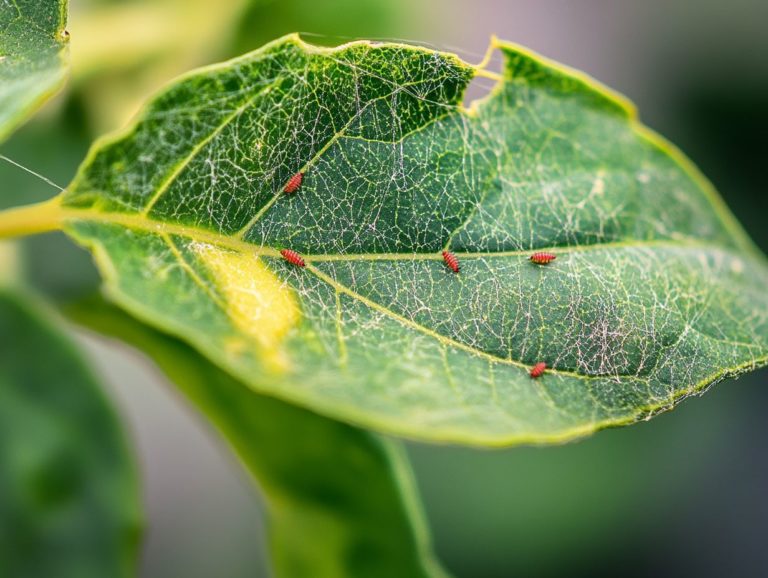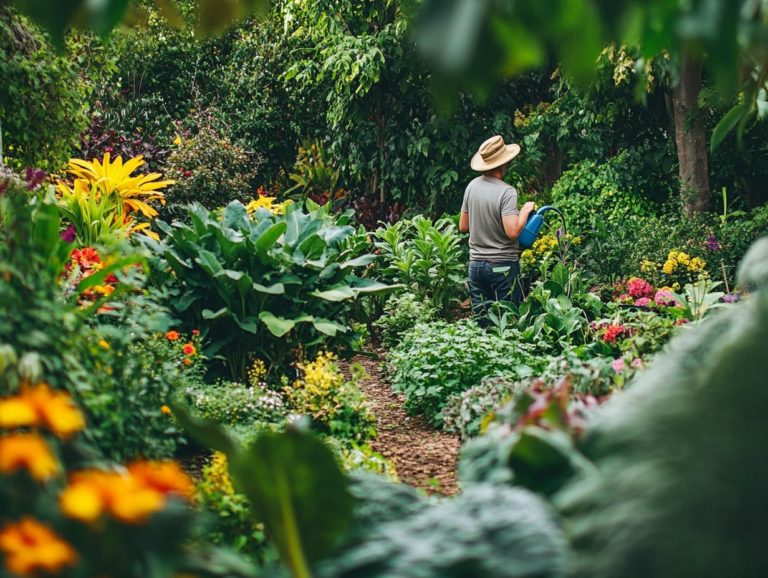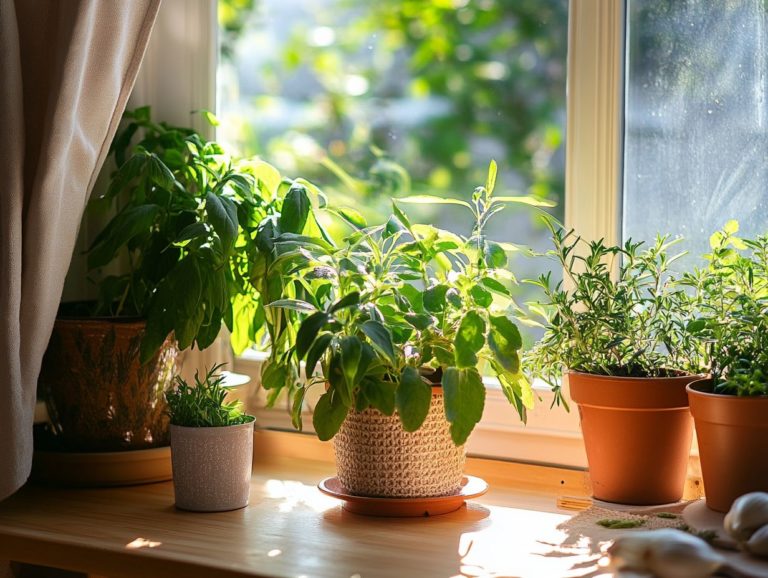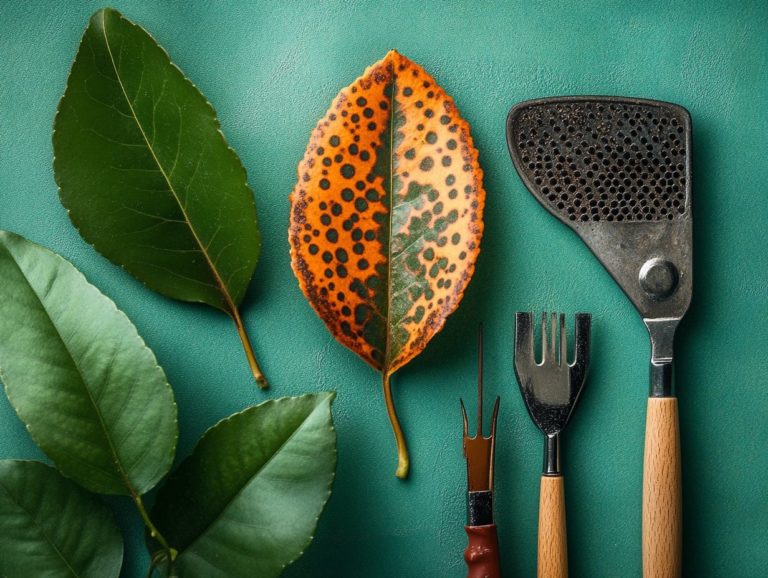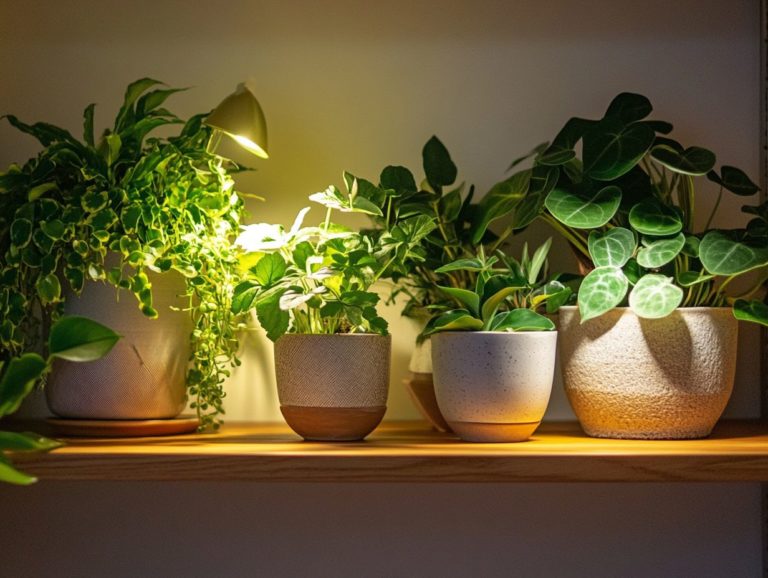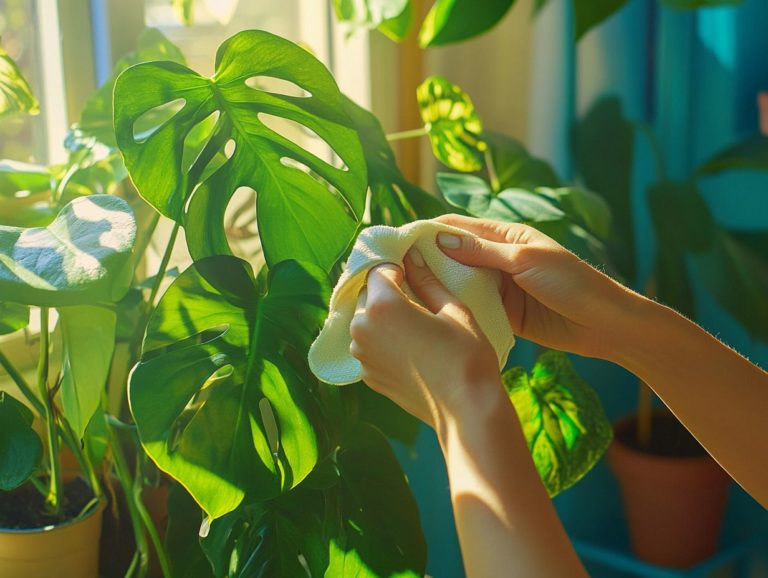5 Signs Your Plant Needs Pest Attention
Plants have the remarkable ability to infuse life and beauty into any space. However, they can fall victim to pests that threaten their health. Recognizing the signs of infestation is crucial for keeping your greenery vibrant and thriving.
This article covers five key indicators that your plant may need pest intervention. These signs include visible damage and sticky residues. It also emphasizes the importance of pest control, identifies common pests to watch for, and provides effective ways to control them.
By staying informed, you can keep your plants happy and flourishing. Create an oasis of greenery that is both beautiful and healthy.
Contents
- Key Takeaways:
- 1. Leaves Have Visible Damage or Holes
- 2. Presence of Sticky Residue on Leaves
- 3. Yellowing or Wilting Leaves
- 4. Presence of Webbing or Silk-like Threads
- 5. Visible Pests on Plant or in Soil
- Why Is Pest Control Important for Plants?
- Frequently Asked Questions
- Wondering if your plant needs help? What are the 5 signs that my plant needs pest attention?
- Curious about signs of pests? How do I know if my plant is wilting or drooping due to pests?
- Why does yellowing or browning of leaves indicate a pest problem?
- What should I check for when inspecting my plant for pests?
- Can pests cause holes or chew marks on my plant’s leaves?
- How will pests affect the growth of my plant?
Key Takeaways:
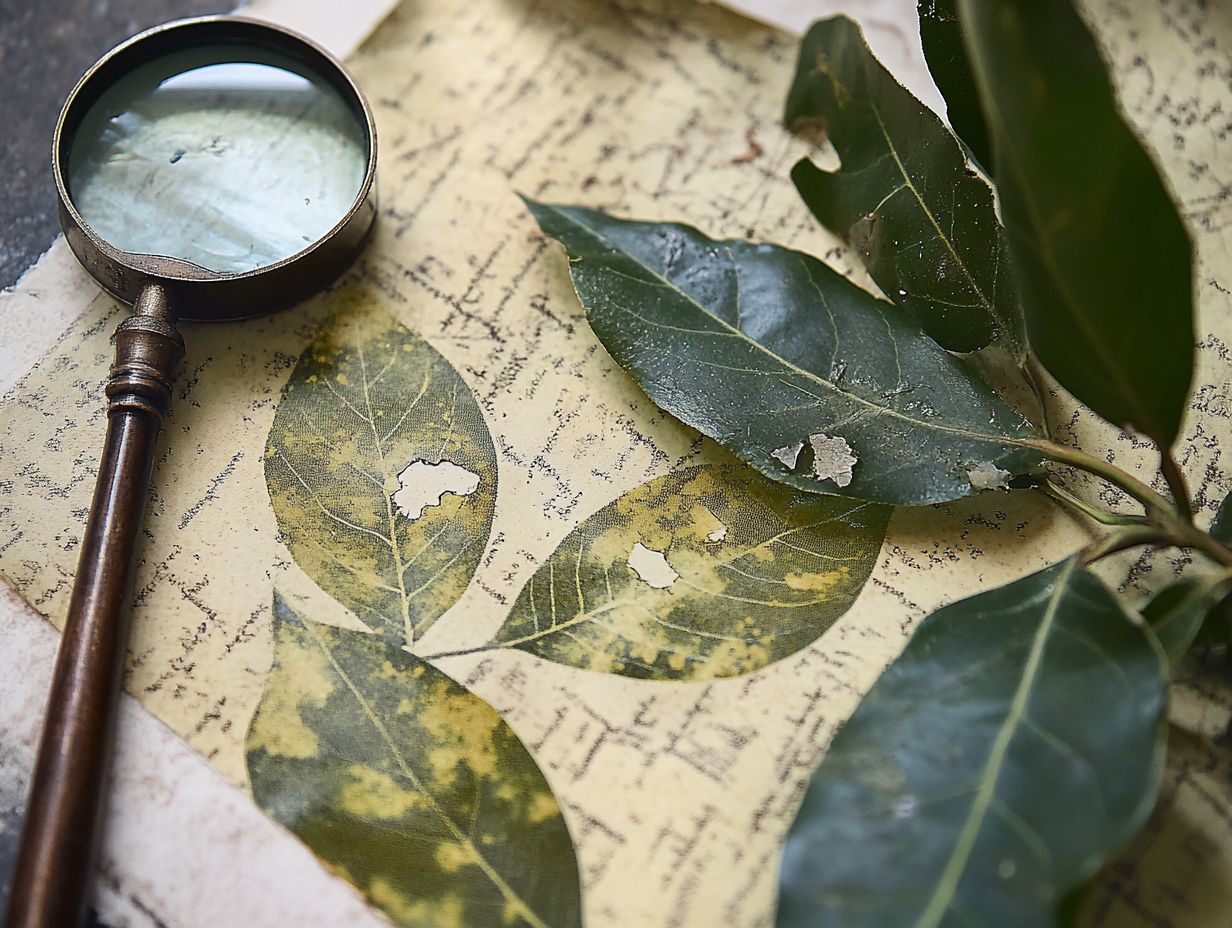
- Look out for visible damage or holes on your plant’s leaves; this could signal pest infestation.
- Sticky residue on leaves is a warning sign of pests; act quickly to prevent further damage.
- Yellowing or wilting leaves may result from pests feeding on your plant; address the issue promptly to save your plant’s health.
1. Leaves Have Visible Damage or Holes
Visible damage or holes in leaves can be troubling signs of deeper health issues in trees. This is particularly important in residential areas where proper plant care is vital for aesthetic appeal and environmental harmony.
Symptoms often arise from various pests like aphids or spider mites that drain vitality from foliage. Diseases such as powdery mildew or leaf spot can also weaken trees, making them more vulnerable.
Water issues, poor soil quality, or pollution can also affect leaf health. These factors may lead to premature leaf drop and reduced ability to absorb sunlight and produce energy.
Spotting these signs quickly is crucial to saving your plants! Compromised trees don t just suffer in silence they can jeopardize the health of surrounding flora and fauna, disrupting local habitats and diminishing biodiversity.
2. Presence of Sticky Residue on Leaves
Sticky residue on your plant leaves often signals pest problems like aphids or mealybugs. These pests threaten the overall health of your plants and require effective ways to control them.
This sticky substance, known as honeydew, is a byproduct of pests feeding on plant sap. It creates an unsightly appearance that hinders photosynthesis and attracts additional pests like ants and sooty mold.
To tackle these issues, timely identification of pests is crucial. Using tools like yellow sticky traps can help you monitor and catch invasive species before they cause further damage.
3. Yellowing or Wilting Leaves
Yellowing or wilting leaves are critical indicators of distress in your plants. They may signal potential nutrient deficiencies or improper watering habits.
These symptoms may indicate your plant is struggling due to a lack of essential nutrients like nitrogen or magnesium. Poor soil quality can also contribute to this problem.
Too much or too little sunlight can create stress, prompting your plant to send out these alarming signals. To identify issues early, be aware of the top 5 signs of indoor plant distress. Regular inspections and adjustments to your care routine are essential for any dedicated gardener.
4. Presence of Webbing or Silk-like Threads
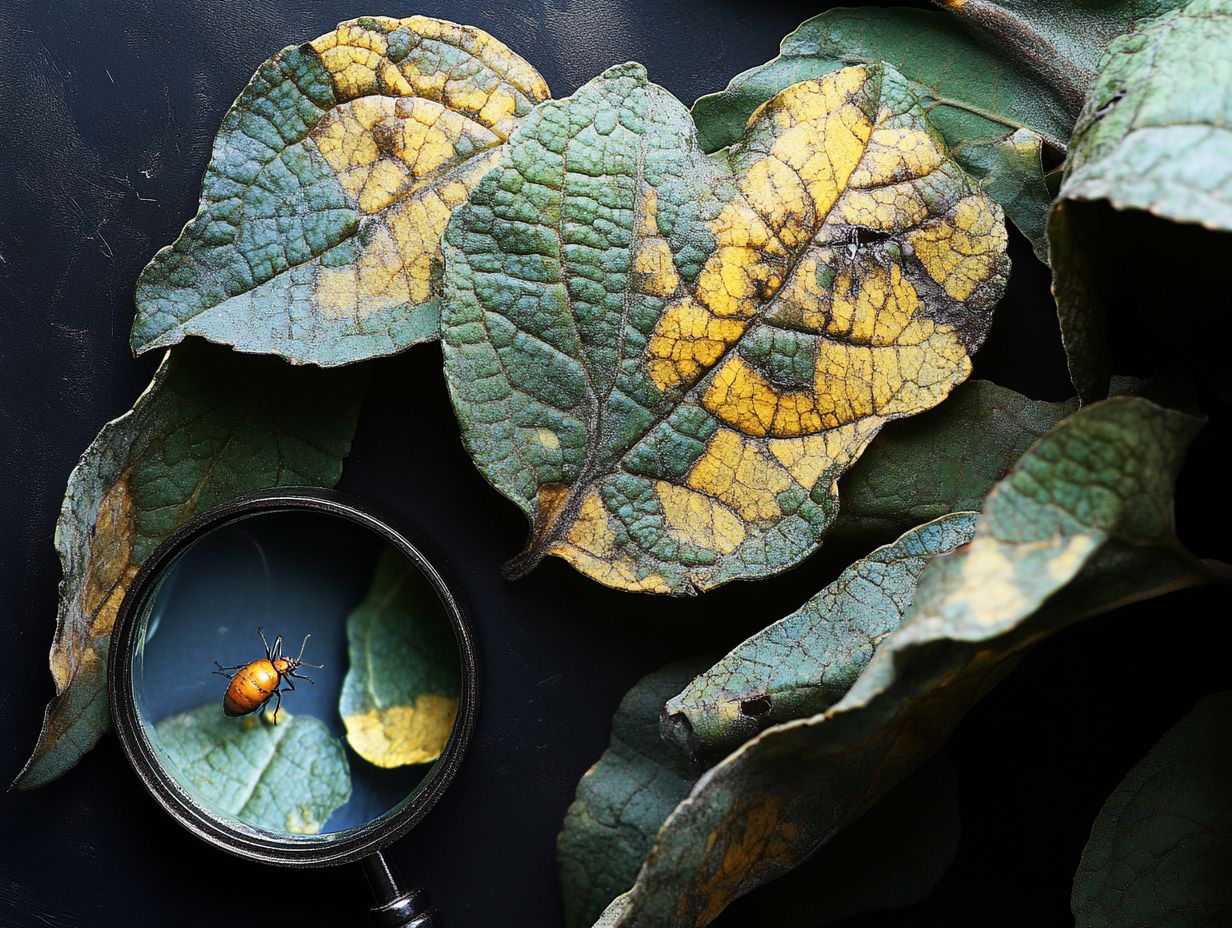
The presence of webbing or silk-like threads on your plants often signals a spider mite infestation. This can escalate into serious health issues if not managed properly.
These minuscule pests weave their webs primarily as a defense mechanism. This forms a protective barrier against predators and allows them to flourish among your beloved plants.
As they take nutrients from the plant, they gradually undermine its overall health. This leads to yellowing leaves, stunted growth, and, in extreme cases, the death of the plant. Early identification of spider mites is crucial for implementing effective control strategies.
Consider introducing natural predators like ladybugs or predatory mites. This approach offers a safe and eco-friendly solution to mitigate their impact on your plant’s health, preserving the beauty and vitality of your garden!
5. Visible Pests on Plant or in Soil
Don t let pests ruin your beautiful garden! Spotting visible pests on your plants or in the soil signals that immediate action is essential to prevent further damage and maintain the health of your greenery.
Common nuisances like fungus gnats thrive in damp environments, presenting significant risks to both soil health and plant vitality. It s wise for homeowners to prioritize regular inspections of their plants; these proactive measures allow for early detection of infestations.
By identifying these pesky invaders promptly, you can implement targeted control strategies like introducing beneficial nematodes or fine-tuning your watering routines. This vigilance is vital for preserving the overall health of trees and plants in residential areas.
By keeping a watchful eye on your plants, you can effectively protect your outdoor spaces and revel in the beauty of thriving foliage.
Why Is Pest Control Important for Plants?
Pest control is essential for maintaining the health of your trees and supporting the greater ecosystem. Unchecked pests can severely impact plant vitality and lead to significant health issues, particularly in residential areas.
These unwanted invaders not only threaten individual plants but also create a domino effect that can lead to disease proliferation and disrupt local biodiversity. When pest populations flourish unchecked, they may introduce harmful pathogens that jeopardize not just your trees but entire plant communities.
This is where professional assistance becomes invaluable. Expert pest management services offer the essential knowledge and tools needed to monitor and regulate these populations effectively. By employing integrated pest management strategies which means using a variety of methods to control pests safely and effectively specialists can minimize pest-related damage, ensuring that your trees stay robust and ecosystems remain balanced.
What Are the Common Pests That Affect Plants?
Common pests that affect your plants include spider mites, aphids, and mealybugs. Each of these little troublemakers poses unique challenges to your plant care routine and requires specific management strategies.
If left unchecked, these pests can significantly compromise plant health, weakening foliage and stunting growth. You might spot spider mites by the tiny webs they weave on the undersides of leaves. They re known for their rapid reproduction, making early detection crucial!
Aphids, on the other hand, are small and soft-bodied, often seen clustered on new growth. Keep an eye out for their sticky excretion, honeydew, which can lead to a lovely layer of sooty mold. If you’re concerned about your plants, it’s essential to know what the signs of pest infestation are. Then there are mealybugs, easily recognized by their cotton-like appearance, lurking in hidden crevices and draining the plant’s vital nutrients.
To combat these threats, make regular inspections a part of your routine. Introducing beneficial insects, like ladybugs for aphid control, along with targeted insecticidal soaps, can effectively reduce their populations and keep your plants thriving. Act fast to protect your plants!
How Can Pests Affect the Health of Plants?

Pests can seriously harm the health of your plants by causing physical damage, introducing disease, and leading to root complications that stunt growth and overall health.
These pests can attack different parts of your plants, including leaves, stems, and roots, resulting in wilting, discoloration, and even premature leaf drop. Recognizing the early signs of pest presence, such as unusual holes in the foliage or sticky residue, can make a significant difference in your plant’s recovery and longevity. For more detailed guidance, check out this article on how to identify common indoor plant pests.
If left unchecked, these pests won’t just weaken your plants; they’ll also foster an environment ripe for diseases that threaten their well-being. Keep an eye out for signs your indoor plant has pests to ensure your plants thrive.
What Are the Different Methods of Pest Control for Plants?
Various methods of pest control are available for your plants, encompassing everything from natural remedies to chemical solutions, all designed to safeguard your healthy plants and promote optimal growth.
You might consider biological strategies, like introducing beneficial insects that feast on harmful pests, or cultural techniques that include crop rotation and proper sanitation to disrupt pest life cycles. While chemical approaches can provide quick fixes, they often raise concerns about environmental safety and resistance development.
Using a mix of pest control methods improves your results and protects the environment, ensuring a healthier ecosystem for all living organisms involved.
How Can One Prevent Pests from Infesting Plants?
Preventing pests from infesting your plants requires a thoughtful blend of proper care, regular inspections, and a keen understanding of the environmental conditions that favor pest growth, including light conditions and watering needs.
By choosing pest-resistant varieties, you can significantly diminish the risk of outbreaks, nurturing a healthier garden ecosystem in the process. Maintaining robust, nutrient-rich soil not only promotes thriving plants but also deters pests by creating an inhospitable environment for them.
It’s essential to ensure your plants receive just the right amount of light and water; whether it’s overwatering or underwatering, both can stress your plants and make them more vulnerable to infestations. Regular monitoring, like checking leaf appearance for unusual spots or signs of distress, allows you to catch any issues before they spiral out of control. Be aware of the 5 signs of spider mites in indoor plants to protect your greenery effectively.
Implementing systematic inspections, especially during peak growing seasons, will help you identify and address potential threats before they escalate, safeguarding your garden’s vitality and the health of your plants. Look out for 5 signs your plant needs repotting to ensure they thrive. With these tips, you’ll be well on your way to a pest-free garden!
What Are the Risks of Not Addressing Pest Infestations in Plants?
Neglecting to address pest infestations in your plants can lead to serious risks, including compromised tree health, reduced ecosystem stability, and the unsettling possibility of diseases spreading to neighboring plants. This can result in significant health issues.
If you let these pests go unchecked, they can cause long-term environmental damage, harming the biodiversity that various species depend on for survival. The economic consequences can escalate quickly; you might face significant losses from damaged landscaping, decreased property values, and expensive restoration efforts, especially related to damage to the main part of the tree and other limb complications.
Act now! Timely intervention is crucial to protect your plants. Seeking professional aid effectively reduces these risks and ensures the vitality of your residential garden and the broader ecosystem. Recognizing the importance of a proactive approach not only offers immediate relief but also fosters sustainable growth for the future.
Frequently Asked Questions
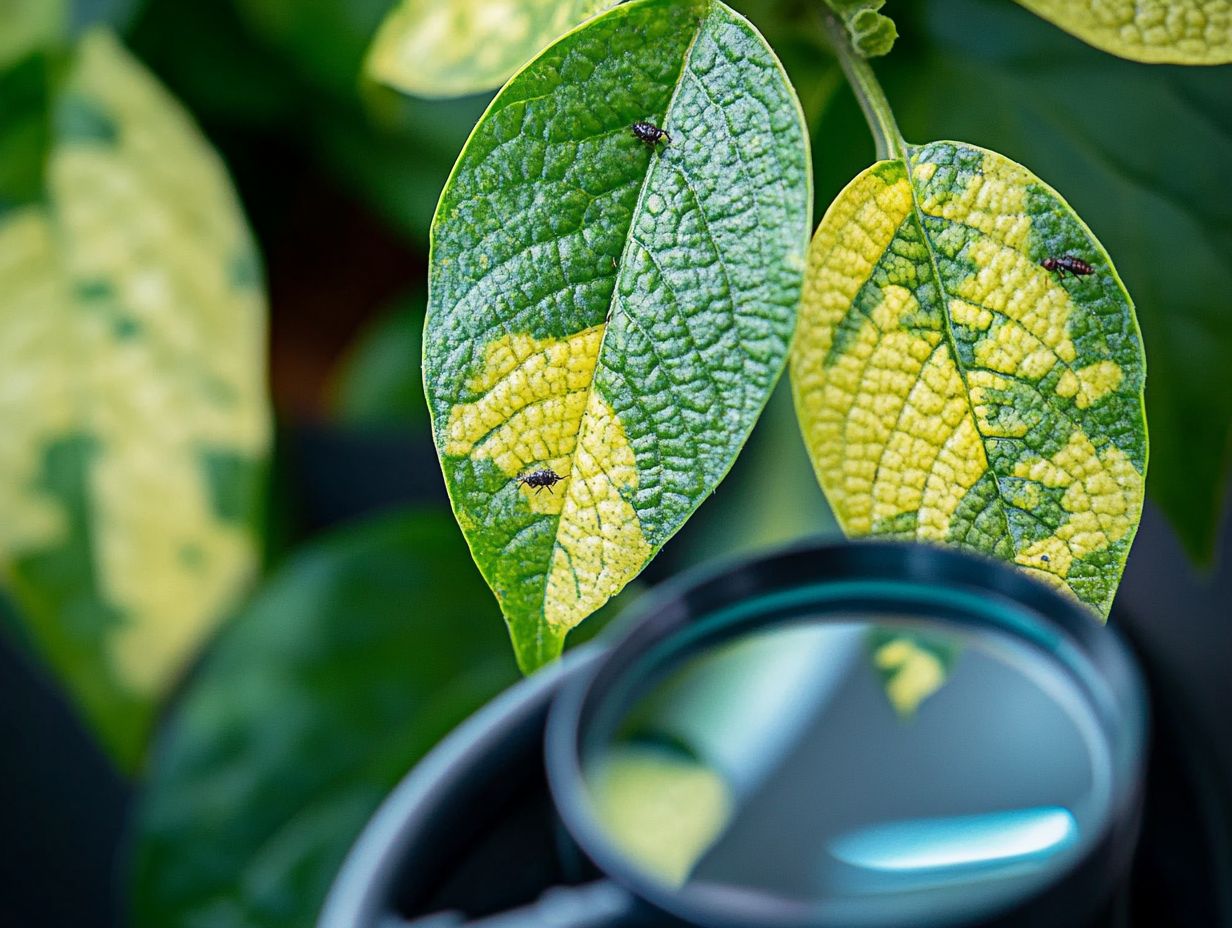
Wondering if your plant needs help? What are the 5 signs that my plant needs pest attention?
- Wilting or drooping leaves
- Yellowing leaves
- Brown tips
- Visible pests on the plant
- Holes or chew marks on the leaves
- Stunted growth
These are all early signs of potential problems.
Curious about signs of pests? How do I know if my plant is wilting or drooping due to pests?
If your plant is wilted or drooping and the soil is moist, it may be a sign of pest intrusion. Pests can harm the roots, the part of the plant that absorbs water and nutrients, preventing proper absorption and causing wilting or drooping.
Why does yellowing or browning of leaves indicate a pest problem?
Pests can feed on the leaves of your plant, causing damage and discoloration. Yellowing or browning of leaves can be a sign of pest feeding and should be addressed quickly to prevent further damage to the plant and potential disease problems.
What should I check for when inspecting my plant for pests?
Check for visible pests such as insects like spider mites, aphids, mealybugs, or snails on the leaves, stem, and soil of your plant. You might also notice webs or cocoons, which indicate a pest infestation, including fungus gnats.
Can pests cause holes or chew marks on my plant’s leaves?
Yes, some pests like caterpillars and slugs can cause visible damage to the leaves of your plant. These pests feed on the leaves, leaving behind holes or chew marks, indicating overall plant health issues.
How will pests affect the growth of my plant?
Pests harm your plant’s growth. They damage the leaves, stems, and roots, which can hinder the plant’s ability to photosynthesize and absorb nutrients. This can lead to stunted growth and possibly even death of the plant if left untreated, impacting not just the plant itself but also the overall ecosystem.

